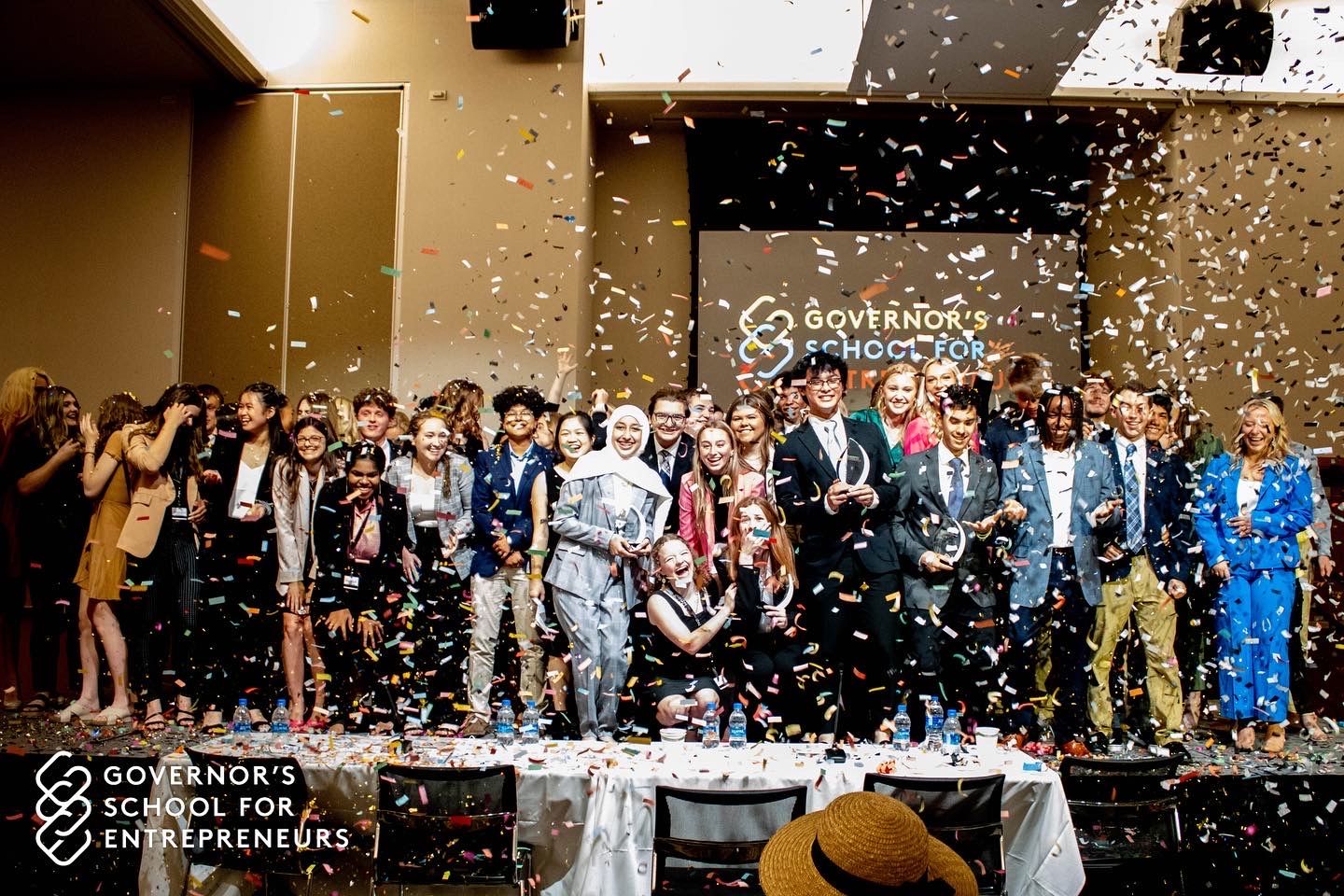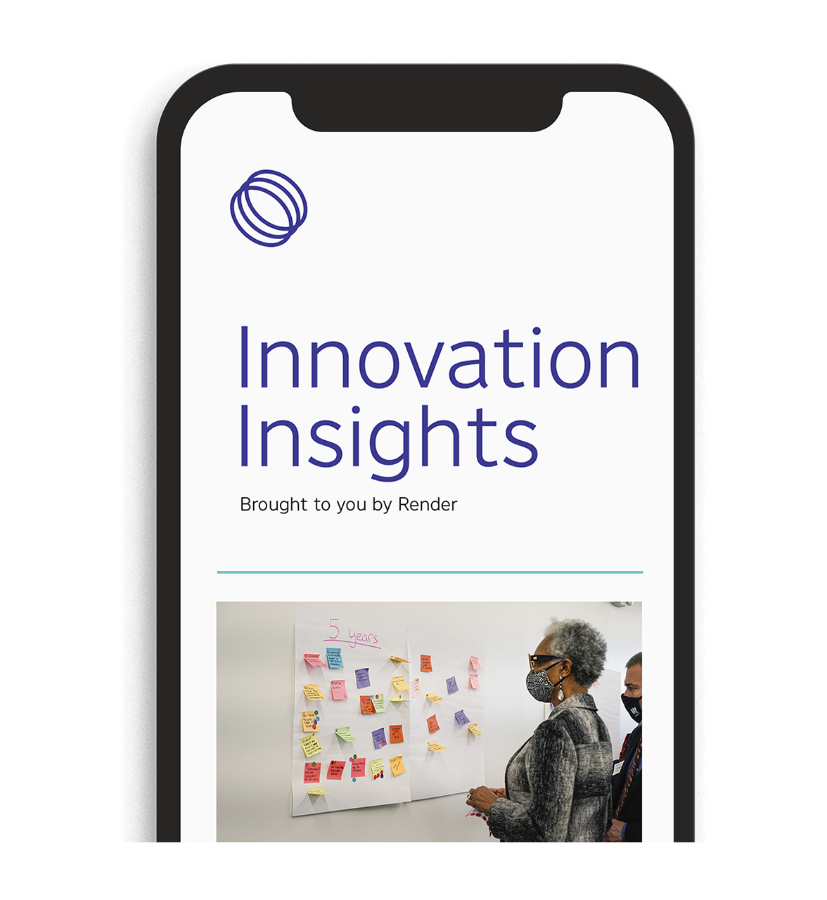At Render, we believe good ideas can come from anywhere. That mantra is at the heart of our Reconstruct Challenge platform which works to find innovative solutions to some of our community's most pressing needs. In line with this mission, this year, we partnered with Kentucky’s Governor’s School for Entrepreneurs to encourage entrepreneurial high school students to use their innovative minds for positive impact. We spent a few hours with 144 high school students from all over Kentucky and because our most recent iteration of the Reconstruct Challenge is focusing on alleviating challenges low-income individuals and families face surrounding employment, we decided to present the students with the same problem statement.
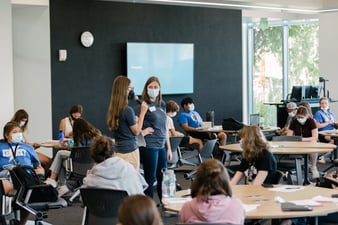
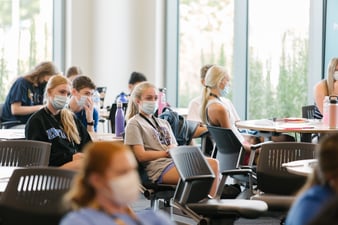
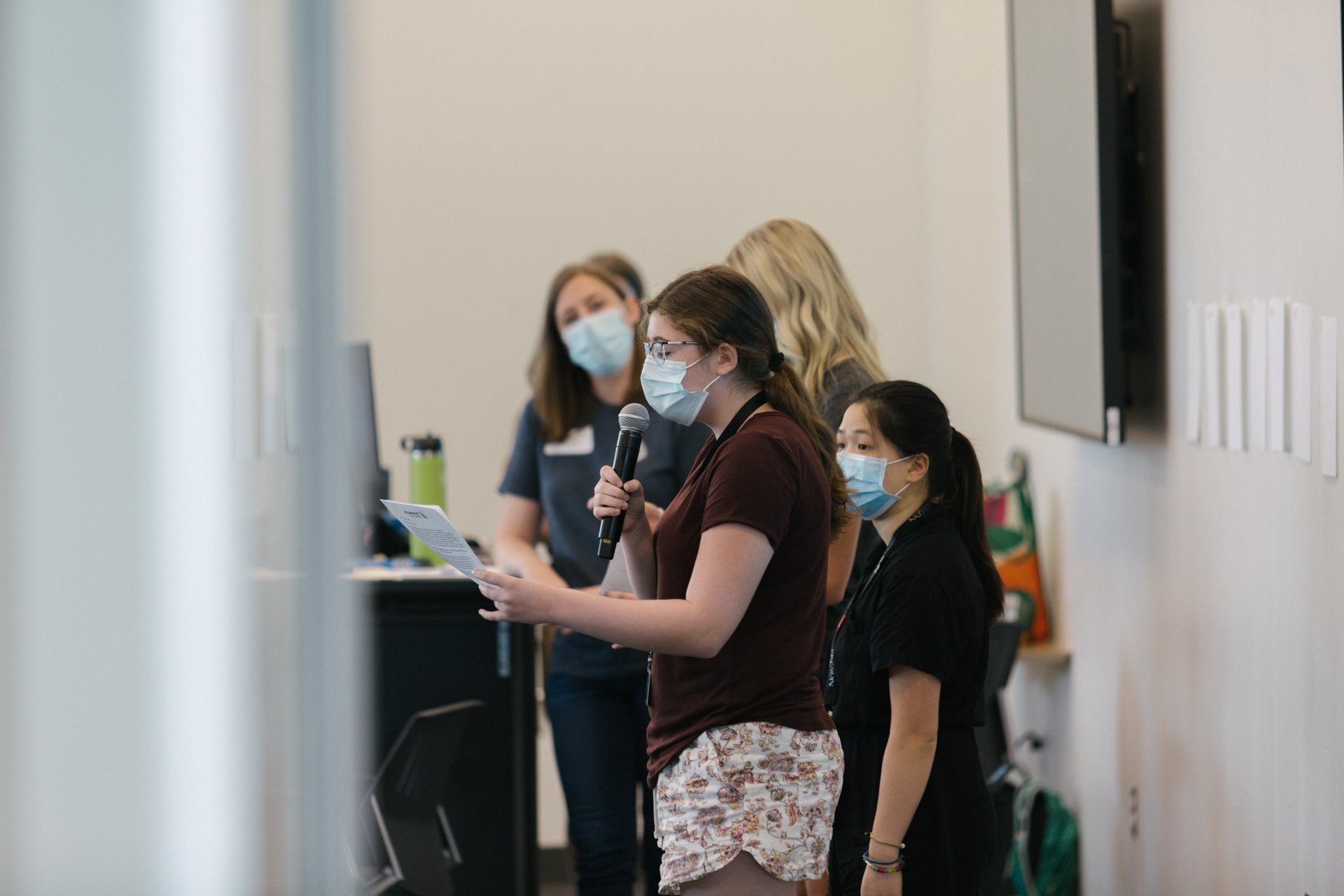
Over the course of the workshop, the students, in teams of 4, identified the specific problem related to employment they wanted to solve, brainstormed solutions, deliberated with their teams, identified the solution they thought had the most potential, and developed that idea. The Governor’s School of Entrepreneurship has a 3-week summer program that teaches students about business models and what it takes to start a company, so asking them to create a business model in under an hour was challenging, but they were up for the task.
Each team developed a mission statement for their solution, determined their key outputs and outcomes, and identified their target market. They presented all of this to the group and they were evaluated by their peers using the same qualities our Reconstruct Challenge applicants are evaluated on; impactful, scalable, feasible, and enduring. Each student voted for their top three companies; below are some of the solutions that received the most votes from students:
- Problem: Criminal records prevent employment
- Solution: A program that connects formerly incarcerated individuals with local businesses and job opportunities. Through the program, they are given opportunities to gain qualifications for a low price
- Mission Statement: We are providing opportunities to gain qualifications and get employed to formerly incarcerated individuals through price-reduced trade schools and partnerships with local businesses to create more jobs in the local economy
- Outputs: Pair with 15 local businesses and 3 trade schools, and begin with 200 formerly incarcerated individuals in need of employment
- Outcomes: 100 more employed formerly incarcerated individuals and more employees which will fuel the economy and help us find jobs for even more unemployed people.
- Target Market: Local businesses in need of employees and good publicity, trade schools that need students, and formerly incarcerated individuals who need jobs.
- Problem: Childcare is expensive
- Solution: We facilitate partnerships between restaurants and daycares to provide childcare workers with discounted meals and restaurant workers with discounted childcare
- Mission Statement: To provide affordable meals and childcare to low-income employees by connecting daycare facilities to restaurants.
- Outputs: Create an app that lets daycares and restaurants looking for partnerships create profiles and be matched together. Individual workers log hours in the app and get ‘cash’ towards childcare and meals.
- Outcomes: Workers log hours to get benefits, workers use ‘cash’ to get cheap childcare and meals, and better work relationships created
- Target Market: People who need help affording childcare
- Problem: Low-income young individuals struggle to hold jobs due to a lack of transportation.
- Solution: Free electric bikes with charging stations invested in by employers in the area. The charging cost is free.
- Mission Statement: We provide a transportation source to low-income individuals by providing an accessible transportation system and encourage their employers to invest in our charging stations for their employees.
- Outputs: Partner with local businesses, labor unions, uber, and electric scooter companies. Ask for data from uber and the electric scooter company.
- Outcomes: Generate revenue ($30,000) from local businesses to finance charging stations. Gather information from companies like uber on where there are regular customers.
- Target Market: Both employees of companies who need a cheap transportation source and companies willing to invest in charging stations.
- Problem: Transportation is not accessible for everyone who needs it.
- Solution: Create a government funding card that gives people a form of payment to afford buses and reduce the cost of transportation for the ones who can barely afford it. Those who qualify for welfare or food stamps would qualify for the transportation card.
- Mission Statement: We distribute government-funded transportation/bus cards to low-income workers, by finding those who qualify for food stamp benefits.
- Outputs: Partner with SNAP and DCBS to figure out who qualifies and receives government funding in Louisville, contact those families/workers and mail out applications.
- Outcomes: 5,000 workers submitted an application for bus cards, and SNAP and DCBS helped provide $500,000 to contribute
- Target Market: Low-income workers without personal transportation, non-profits, SNAP, DCBS
- Problem: Personal hygiene for those who can’t afford it
- Solution: Small buildings or properties where people can go for showers, haircuts, or hygiene products for a free or reduced price. These facilities will also be staffed which will create more jobs in the communities.
- Mission Statement: We provide personal hygiene resources to low-income families or individuals by supplying them with accessible options within their community.
- Outputs: Create 8-10 locations in each community that would serve an estimate of 100-150 people per day per location, accept/solicit donations from any individual or business, and partner with 4 non-profit organizations.
- Outcomes: 1,000 people would be at an advantage with better job opportunities
- Target Market: Low-income families and people who don’t have access to personal hygiene products and services, non-profits, donors, individuals, and groups.
We were honored to play a small role in encouraging and inspiring the next generation of social entrepreneurs right here in our own backyard. You can read our full case study on the Reconstruct Challenge here, or dive deeper at reconstructchallenge.com.

